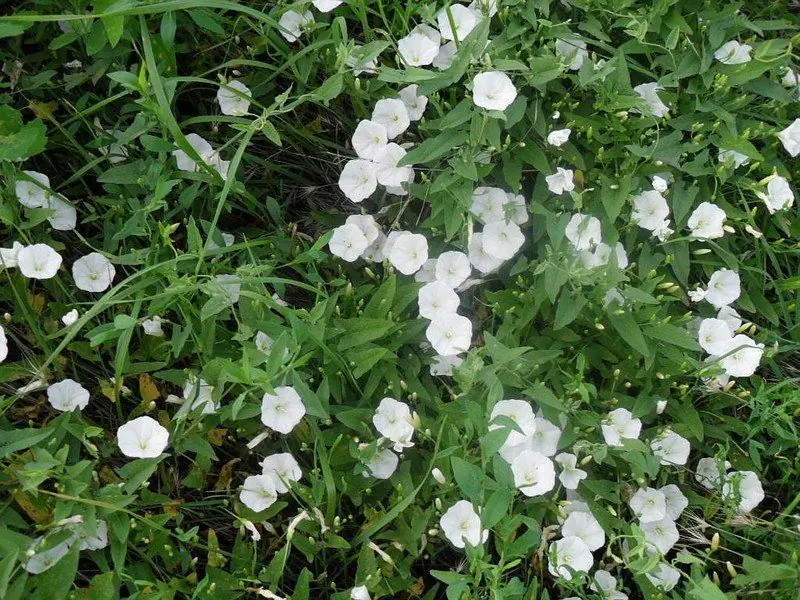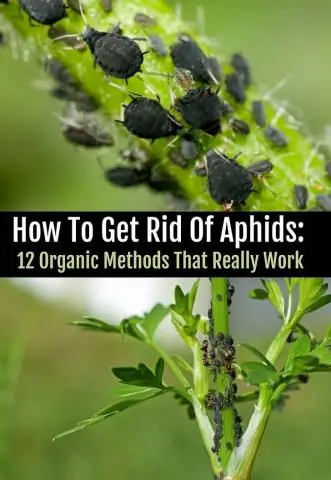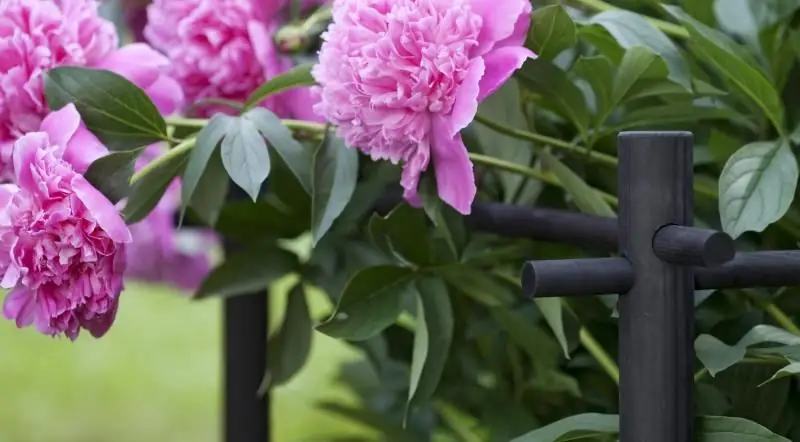
Table of contents:
- Author Bailey Albertson [email protected].
- Public 2023-12-17 12:53.
- Last modified 2025-01-23 12:41.
Field bindweed: how to get rid of weed forever

Field bindweed ("birch") is known to every gardener. Not to say that this is the worst weed (dandelion or hops annoy much more), but it spreads quickly and braids plants severely. Therefore, it is necessary to start the fight against him in time, and if possible, destroy him forever.
What is dangerous field bindweed on the site
Field bindweed is a perennial that reproduces both by seeds and by root suckers. Many underground buds form on the roots of this plant, from which shoots can appear throughout the summer; it, in turn, itself gives rise to new plants. The flowers of the bindweed are quite beautiful, but even from them seeds are formed that scatter over the area and help the “birch” to spread very quickly and reliably. A bed of bindweed is not a decoration of the garden, but a disaster: after all, the stems of this weed curl around the stems of cultivated plants, oppressing them.
Field bindweed roots can reach a length of one and a half meters, penetrating deep and spreading far. And the seeds of this weed plant, ripening in bell-shaped flowers, remain viable for decades. The insidiousness of the bindweed lies in the fact that its shoots are hardly noticeable, and by the time the gardener sees young plants, they have already become very strong and have a strong root system.

The stem of the loach is tough, strong, winds around other plants
The weed damage is obvious. In addition to the fact that it greatly impoverishes the soil, spending nutrients for its development, it weakens all those plants around which it winds. Cultivated plants slow down their growth, their yield is sharply reduced. In severe cases, plants may die altogether: after all, the bindweed is also a wonderful environment for garden pests.
Effective ways to get rid of weeds in the garden
The field bindweed is very tenacious, it is difficult to completely remove it, although it is possible, but not the first time. It is advisable to use several different techniques at the same time from those available to the gardener.
Chemical methods
Chemical extermination is the most radical, but it is the powerful drugs that have to be used in the massive spread of weeds. As a rule, various glyphosate-based products are used, produced under the names Roundup, Tornado, etc. This can be done in the presence of a green mass of bindweed, or better at the very beginning of its flowering. Spraying leads to rapid wilting (after a few days the weed darkens, after a week it dries up), but the operation will have to be repeated more than once, as new plants appear.

Roundup is positioned as an almost harmless drug, but it is better to play it safe and not use it once again
Mechanical destruction
Glyphosate, no matter how the manufacturers advertise it, still belongs to organophosphorus preparations, which are by no means the most harmless to humans. Therefore, its uncontrolled use in suburban areas is undesirable. Therefore, with a small amount of weed, gardeners try to get by with ordinary weeding. But due to the power of the bindweed roots, it will need to be weeded out very often and scrupulously. If planting allows, it is better to carefully prune it below the soil level when weeds appear. It is better to burn everything pulled out immediately. During autumn and spring digging, all the roots are carefully removed and also sent to the fire.
Fighting with the shadow
Obviously clogged areas can be temporarily removed from household use, nothing can be planted on them, but covered with dense materials that prevent the passage of light. You can use boards, plywood, dark film, roofing felt, etc. Within one season, you can clear the area of weeds in this way. Continuous mulching of the site with a thick layer of any material also complicates the germination of bindweed, weakens it, although it does not destroy it.
However, shading of the site can be carried out without taking it out of service. If the amount of weed is small, plants such as pumpkins or squash can be planted here. Their foliage will create a fairly reliable shade, and the bushes are so powerful that the "birch" practically does not harm the pumpkin plants.

Pumpkin leaves make life difficult for bindweed
Biological techniques
There are plants, the neighborhood with which does not like the "birch". Fortunately, these are green manure crops - herbs sown to heal the soil. A dense planting of mustard, bluegrass, vetch or fescue is the best option. Even ordinary vegetable peas that are planted for harvesting can significantly reduce weed growth. It is important to sow it as early as possible and more often than usual.
Video: mustard vs bindweed
Folk remedies
Since bindweed prefers acidic soils, you can try to alkalize them to combat it. In autumn or spring, when digging, a large amount of wood ash or slaked lime is introduced into the ground. However, you need to be careful with lime, especially if perennial plants grow nearby.

Ash is not only an excellent fertilizer: it is irreplaceable in the garden
In addition to alkaline compounds, he does not like bindweed and ordinary table salt. The soil is watered with a salt solution (1 kg per bucket of water). However, it should be borne in mind that not all cultivated plants will subsequently grow in saline soil.
In the case of a small amount of weed, even steep boiling water can kill it, with which the soil is generously watered, capturing the surroundings of the plant within a radius of up to a meter.
Reviews on the fight against bindweed
To successfully combat the bindweed requires a lot of effort, preferably varied. Only comprehensive measures can help get rid of the weed forever. But do not think that the bindweed will not appear again: after all, even an absolutely clean area can get seeds from a neighbor's garden.
Recommended:
How To Get Rid Of Urine Stains And Odors On The Couch: Effective Cleaning Methods + Photos And Videos

How to get rid of the urine smell on the couch. Methods for removing stubborn stains and animal marks. Effective recipes and precautions
How To Get Rid Of Rats In A Private House, Chicken Coop, Apartment And Other Premises - Using Various Methods To Get Rid Of Rodents

Reasons for the appearance of rats in the house. What methods, means to use in the fight against rats in various residential and non-residential premises. Preventive actions. Video
How To Get Rid Of Aphids In The Garden And In The Garden: Effective Methods Of Control

What is aphid, what does it look like and what it eats. Insect species. Control methods: folk remedies and insecticides. Pest prevention
Fences For Garden Beds With Your Own Hands - How To Make A Fence For A Front Garden, Flower Garden Or Vegetable Garden, Step By Step Instructions With A Photo

Options for fences for a suburban area. Their pros and cons. How to install a holder for plastic bushes, a flower bed from bottles: step by step instructions. Video
5 Things I Will Get Rid Of Before The New Year To Bring Happiness And Wealth Into The House, As Well As Get Rid Of Negativity

According to the old tradition, before the New Year, I get rid of 5 unnecessary things in order to let the positive energy of happiness and prosperity into my life
